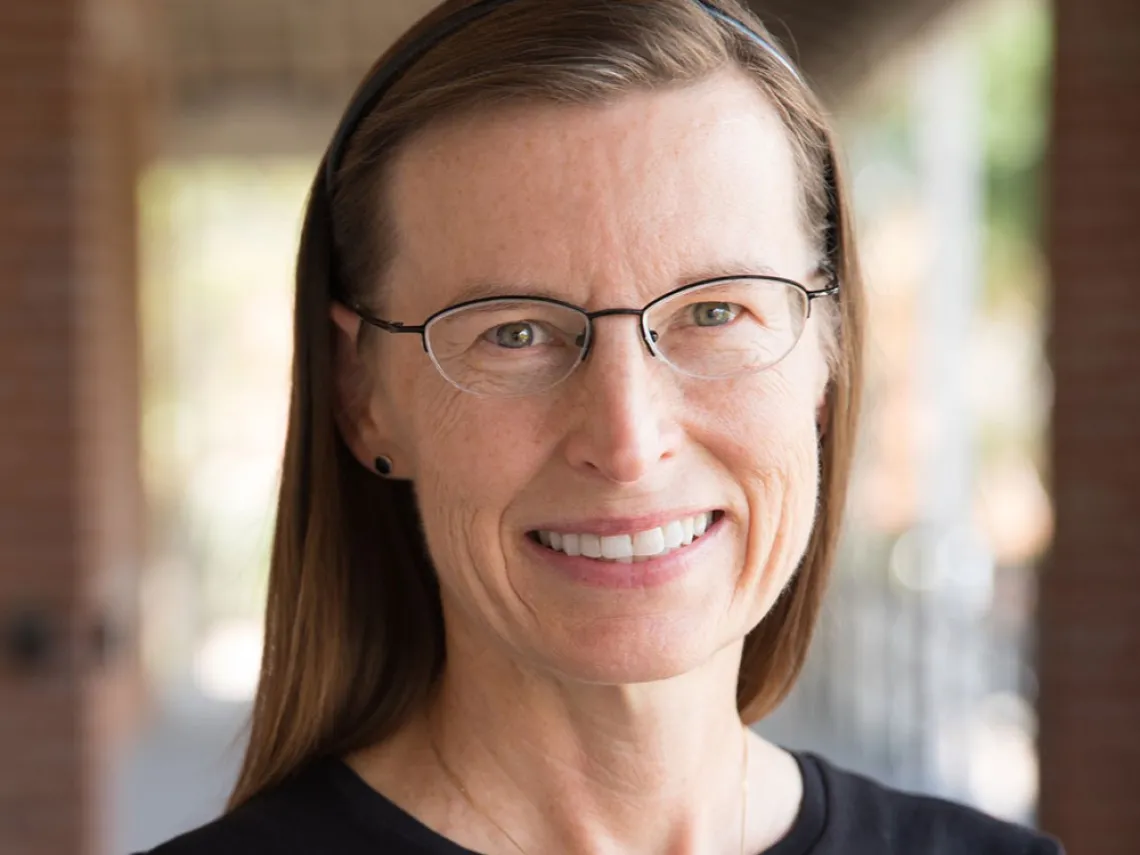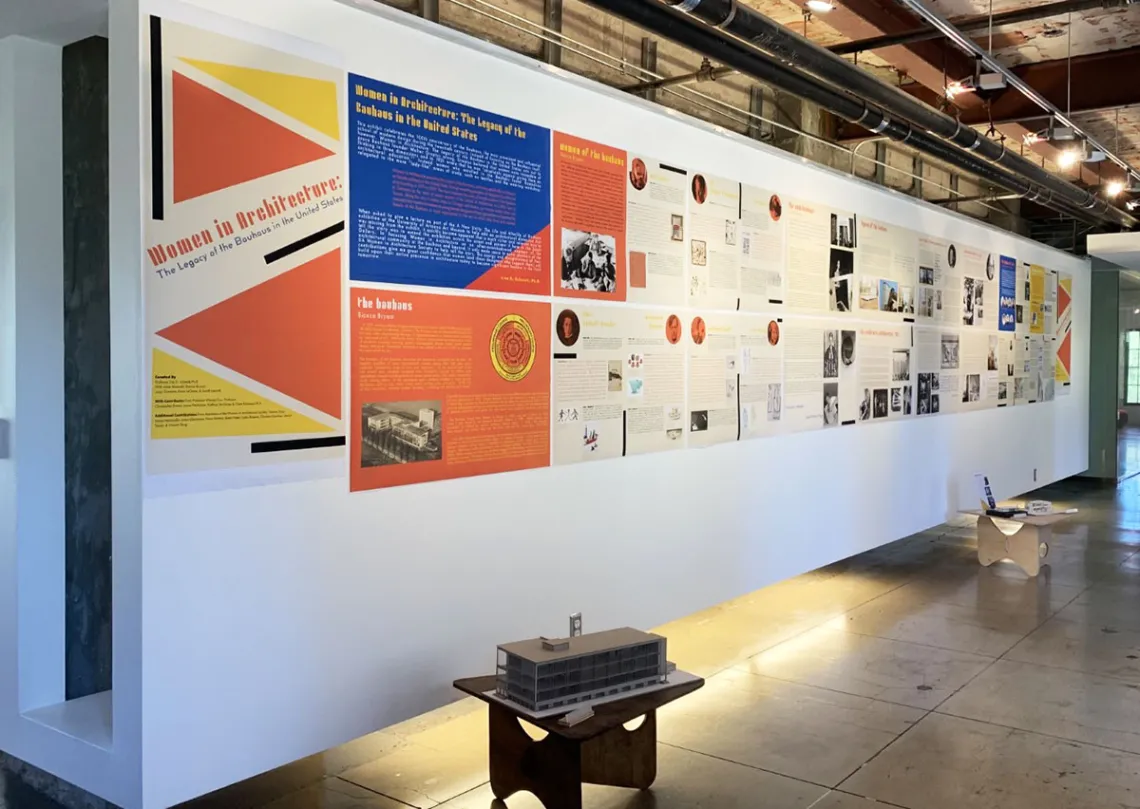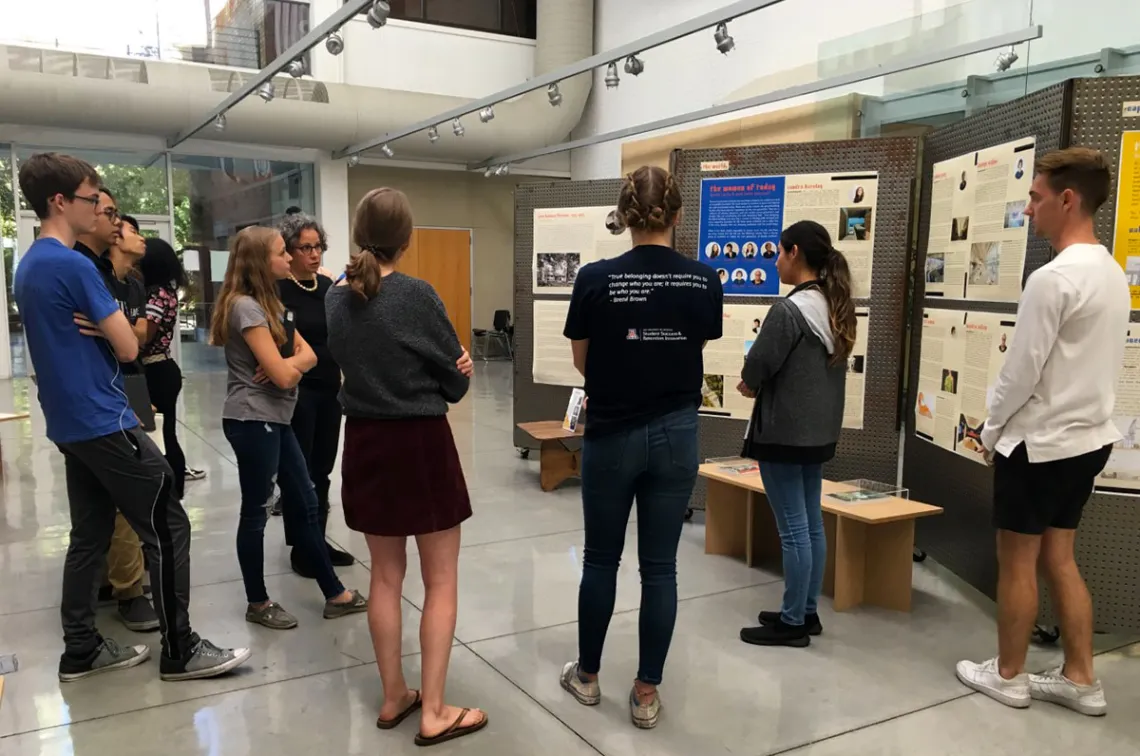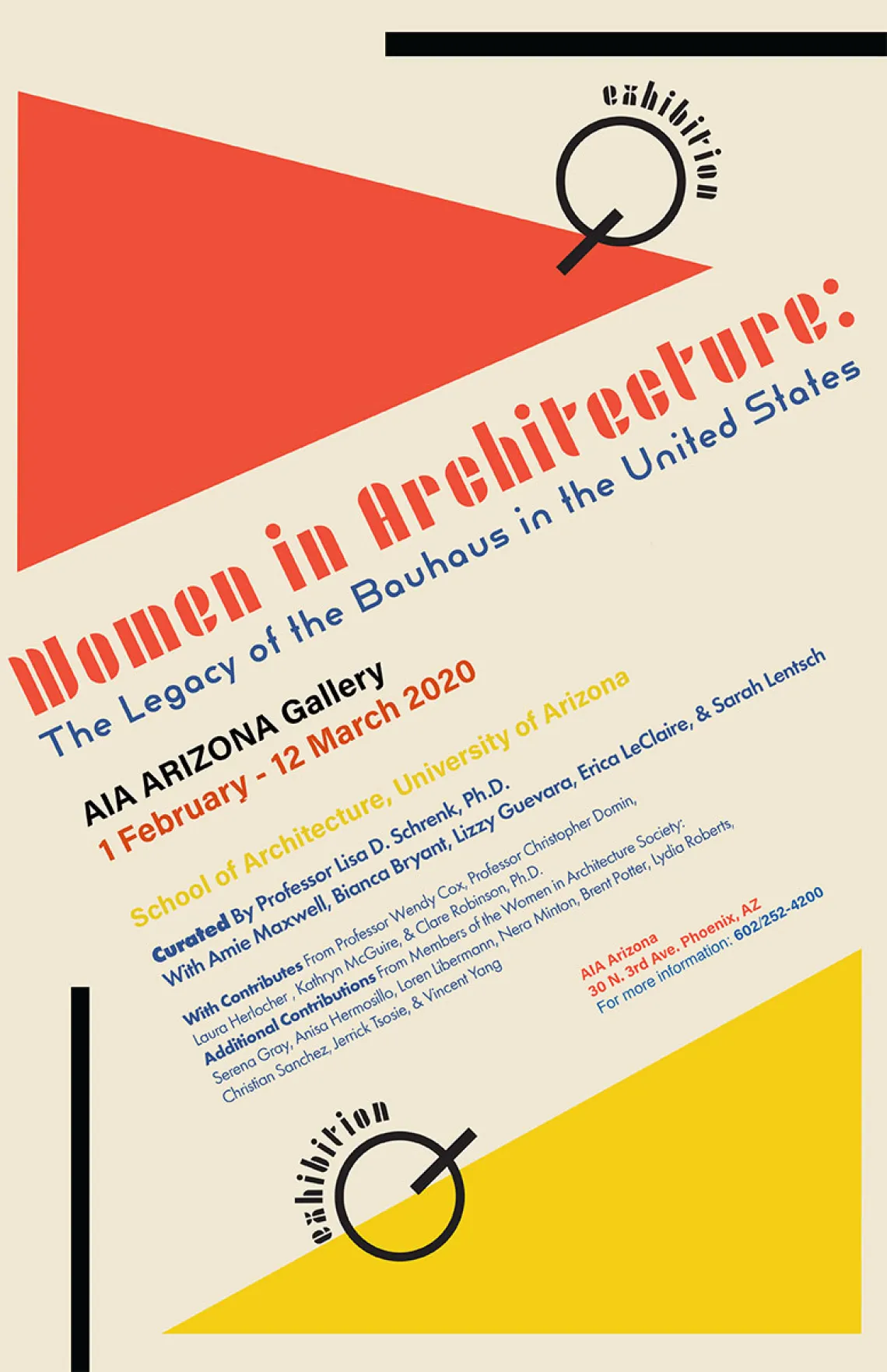CAPLA Architectural History Professor Opens Women in Architecture: The Legacy of the Bauhaus in the U.S. Exhibition in Phoenix

Lisa Schrenk, Associate Professor of Architectural History.
Last fall, Women in Architecture: The Legacy of the Bauhaus in the United States, an exhibition curated by Lisa Schrenk, associate professor of architectural history in the College of Architecture, Planning and Landscape Architecture at the University of Arizona, was held at CAPLA. Now that exhibition is on display in the Gallery of the Arizona chapter office of the American Institute of Architects—at 30 North Third Avenue in Phoenix—through March 12, 2020.

Women in Architecture: The Legacy of the Bauhaus in the United States Exhibition at the AIA Arizona Gallery. Photo by Amie Maxwell.
The exhibition, which held its Tucson opening to coincide with Tucson Modernism Week 2019, was organized in conjunction with Bauhaus: Art, Technology and Women—A New Unity? at the University of Arizona Museum of Art. Women in Architecture builds upon the Art Museum exhibit’s emphasis on the women at the Bauhaus and focuses on women architects influenced by the Bauhaus in the United States.
Women in Architecture exposes the broader community to the work of very talented but largely ignored female architects of the mid-20th century who were influenced by the Bauhaus teachings. It also explores how the legacy of the Bauhaus still has a presence in architectural education today—and how far female architects have come from the days when people like Walter Gropius, head of the Bauhaus in the 1930s, declared, “We are absolutely against giving them [women] an architectural education.”

Women in Architecture: The Legacy of the Bauhaus in the United States Exhibition at CAPLA's Sundt Gallery. Photo by Lisa Schrenk.
Women in Architecture includes an introduction to the Bauhaus, highlighting the work of seven women who studied there, and then moves into a major section on Sally Harkness and Jean Bodman Fletcher, two women who were part of a group of seven young architects who began The Architects’ Collaborative in Boston and invited Gropius to work with them after he left Germany in 1937. Harkness developed a friendship with Judith Chaffee, a Tucson architect who taught at the University of Arizona School of Architecture and invited Harkness to lecture here.
Other sections of the exhibit explore the New Bauhaus in Chicago and the work of Marianne Wallsch, who designed interiors for the House of Tomorrow and other futuristic model homes at the 1933-34 Century of Progress International Exhibition, which pulls from Schrenk’s own research and was the topic of a talk she gave to members of the University of Arizona Museum of Art in September 2019.

Students view the Women in Architecture: The Legacy of the Bauhaus in the United States Exhibition at CAPLA. Photo by Lisa Schrenk.
In part to help connect the exhibit to the present day for students, two additional sections focus on seven up-and-coming female architects practicing in the United States whose work reflects the values taught at the Bauhaus, as well as seven recent graduates of CAPLA whose capstone projects do the same.
Schrenk engaged students in the creation of the show, including University of Arizona Women in Architecture Society student members Amie Maxwell (who also installed the show at the AIA Arizona office in Phoenix), Bianca Bryant, Lizzy Guevara, Erica LeClaire and Sarah Lentsch, who significantly contributed to the design and materials for the exhibit. Students who created models and furniture for the show include Vincent Yang, Loren Libermann, Anisa Hermosillo, Nera Minton, Serena Gray and Lydia Roberts.
Other exhibition contributors include CAPLA Assistant Professors of Architecture Clare Robinson and Christopher Domin, Tucson architect Kathryn McGuire and Wendy Cox, associate professor of architecture at Norwich University.

Poster by Lizzy Guevara.
Schrenk, who joined CAPLA in 2012, is a leading authority on the architecture of international expositions and the early work of Frank Lloyd Wright. She has also presented papers and authored publications on Radio Flyer wagons, Art Deco architecture, thin-shell concrete and world’s fairs. Her books include Building a Century of Progress: The Architecture of Chicago’s 1933-34 World’s Fair and The Oak Park Studio of Frank Lloyd Wright (available from University of Chicago Press October 2020). She shares both her firsthand experiences and photographs from her travels with students in her history/theory courses, with the public via her image blog AdventuresinArchitecture and with colleagues through SAHARA, a digital-image database sponsored by the Society of Architectural Historians. Schrenk is currently working with CAPLA students and others to assist with the State of Minnesota's efforts to host Expo 2027, the first world's fair in the United States in over 40 years.
The exhibition at the AIA Arizona Gallery is open 9 a.m.-5 p.m. Monday-Thursday and 9 a.m.-1 p.m. on Friday.



